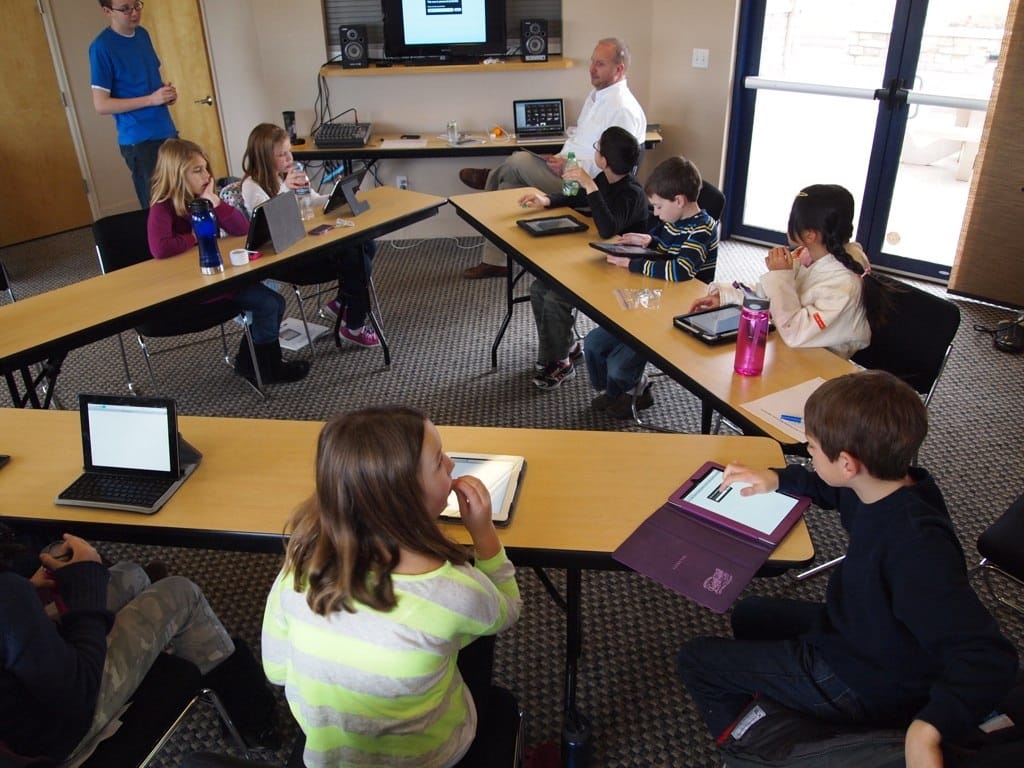Americans are ambivalent about testing, standards, and accountability in their children’s schools. This is clear from survey results that swing wildly depending on how, exactly, the question is phrased—and on whether the practice in question might inconvenience one’s own kid, as apart from fixing those awful schools across town.
The public shows far greater tolerance for tests whose scores may yield things we crave—admission to the college of one’s choice, for example (SAT, ACT), even advance credit for college work (AP)—than for the kind whose foremost purpose is to rank schools or teachers and give distant officials data by which to fine-tune their policies. Indeed, when it comes to statewide standardized testing of the sort that’s become universal in the No Child Left Behind (NCLB) era, a great many parents—and a huge fraction of teachers—appear to have had enough. They grump, with some justice, that
- Too much school time is given over to test prep—and the pressure to lift scores leads to cheating and other unsavory practices.
- Subjects and accomplishments that aren’t tested—art, creativity, leadership, independent thinking, etc.—are getting squeezed if not discarded.
- Teachers are losing their freedom to practice their craft, to make classes interesting and stimulating, to act like professionals.
- The curricular homogenizing that generally follows from standardized tests and state (or national) standards represents an undesirable usurpation of school autonomy, teacher freedom, and local control by distant authorities.
- Judging teachers and schools by pupil test scores is inaccurate and unfair, given the kids’ different starting points and home circumstances, the variation in class sizes and school resources, and the many other services that schools and teachers are now expected to provide their students.
The political fracas brought on by Common Core standards has certainly exacerbated all of the above.
Although decent responses exist for every one of these concerns, as do sundry ways of curbing their excesses, it’s probably time for education reformers and policymakers to admit that just pushing harder on test-driven accountability as the primary tool for changing our creaky old public-school system is apt to yield more backlash than accomplishment. In any case, the NCLB-era strategies—centered on setting standards, administering assessments, and holding everybody “accountable” for the results on those tests—have yielded only modest gains, especially in the high-school years.
That’s not to say testing should cease. It’s still essential to know how kids and schools (and districts and states) are doing at the requisite skills and knowledge of the core curriculum, to inform families making school choices, and to enable educators to fine-tune their own work. The end-of-year results, in particular, make possible all manner of diagnoses, ratings, gain calculations, and interventions at every level of the system, and we’d be crazy to do away with such hard-won information. Yet testing is not a sufficient engine to drive the next generation of education reforms.
So what might be?
The wrong answer is to give up (or declare victory) and settle for the status quo. Far too many kids are still dropping out, far too few are entering college and the work force with the requisite skills, and far too many other countries are chowing down on our lunch.
Major-league education change is still needed, maybe now more than ever, and it’s no time for either complacency or despair.
Alongside transparency-oriented testing based on rigorous standards for the curricular core, here are four drivers of tomorrow’s reforms that are already nudging in promising directions and have the potential to push much harder:
1. Individualization. Without going crazy—everybody still needs to learn to multiply, to compose a grammatical sentence, to explain the background of the Civil War—education is ripe to shift from batch-processing to customizing kids’ instructional experience, moving from pre-set menus to some version of “grazing.” Not just with regard to what is learned or when, but also the mode of instruction—and the rate at which a youngster moves through school.
2. Technology hugely simplifies individualization. Over time, it will also save money, and some of those savings can be redeployed toward hiring better—but fewer—flesh-and-blood teachers. Completely “virtual” out-of-school education will have limited appeal—eight-year-olds still need an adult nearby, plus other kids—but there’s vast potential in “blended” learning under the school roof. And older kids can carry these options beyond the classroom.
3. Quality choices. Choice among schools is a fine thing, and the U.S. has made major strides in widening access for millions of kids via vouchers, charters, tax credits, savings accounts, and more. But some youngsters still have few options—and too many of the available options are mediocre. This part of the reform agenda needs more work, as does widening the marketplace to include choices among courses, delivery systems, even teachers.
4. Attaching the money to the child. All of the foregoing strategies will stumble so long as education dollars flow to schools and districts through multiple program channels that have little to do with which students attend which schools, that fund traditional district schools far more generously than “schools of choice,” and that cannot be counted upon to move if the child changes schools, courses, speed, or delivery system. Solidly placing all the money in the child’s backpack, varying the amount according to her circumstances, giving families substantial say over what schools (or other vendors) will receive it, then empowering the school to spend it however does that child the most good—this may turn out to be the most liberating reform of all.
Each of these strategies will face opposition from the education establishment and will be disruptive of hoary structures and timeworn policies. But if the available alternatives are status quo on one hand and just doubling down on testing on the other, it’s surely worth giving them a chance.
Education reform is dead. Long live education reform.
This first appeared at National Review Online.
photo credit: flickingerbrad via photopin cc


